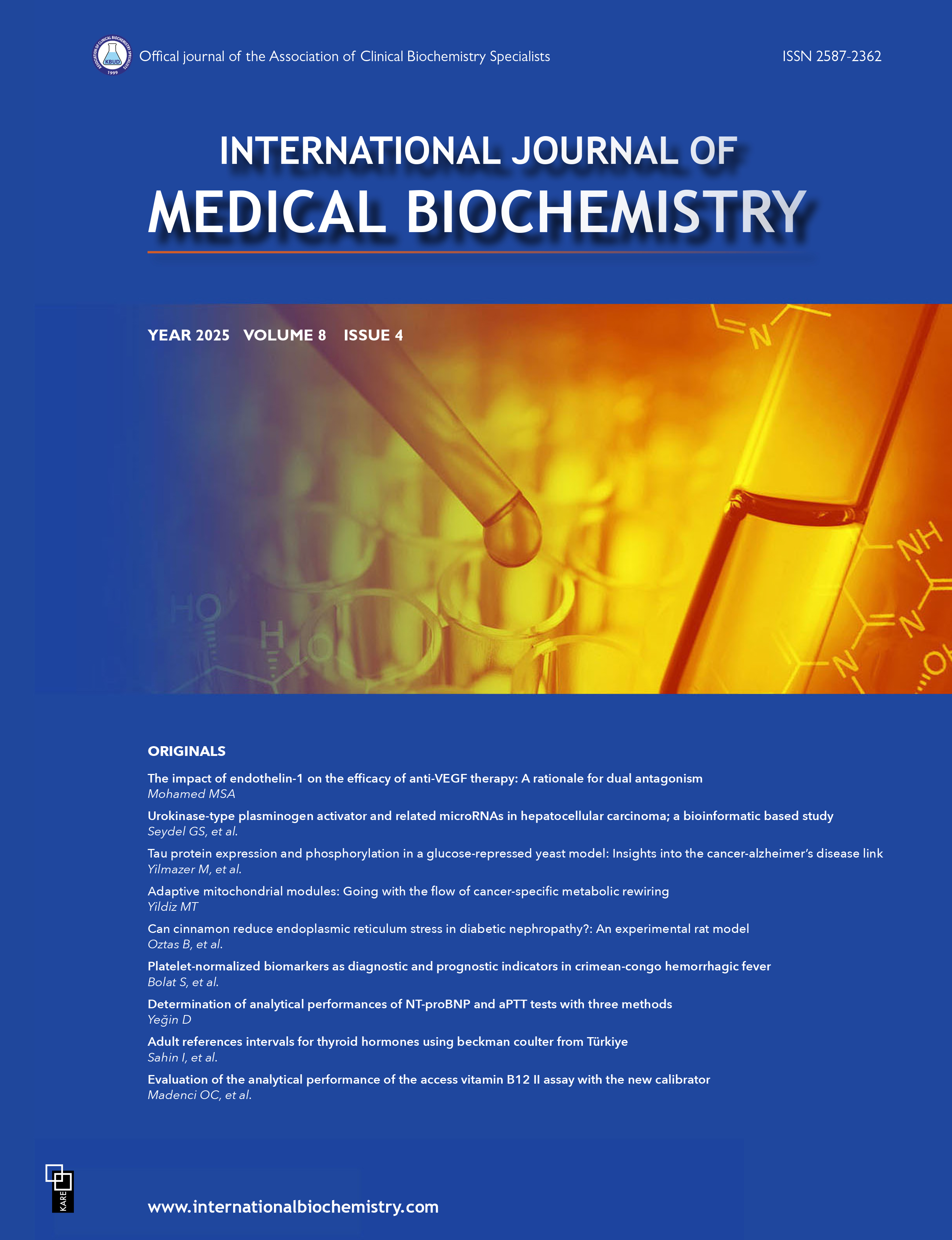Contribution of kynurenine/tryptophan ratio to early prediction of COVID-19 severity in the emergency department
Merve Sena Odabasi1, Alican Ozuag2, Guven Ozkaya3, Zeynep Mine Yalcinkaya Kara1, Ertugrul Altınbilek2, Erdinc Serin11Department of Biochemistry, Sisli Hamidiye Etfal Research and Training Hospital, Istanbul, Türkiye2Department of Emergency, Sisli Hamidiye Etfal Research and Training Hospital, Istanbul, Türkiye
3Department of Biostatistic, Uludag University Faculty of Medicine, Bursa, Türkiye
INTRODUCTION: Kynurenine is the breakdown product of tryptophan. The tryptophan metabolic pathway increases in COVID-19 infection. This study was designed to reveal the relationship between tryptophan and kynurenine levels and disease severity. Our study also aimed to explore the relationship between tryptophan-kynurenine levels and patient survival, need for mechanical ventilation, and length of hospital stay.
METHODS: All 82 COVID-19 patients were grouped as severe and mild cases. Serum tryptophan and kynurenine levels were measured by the ELISA method. Receiver operating characteristic curves were generated to plot the KYN/TRP ratio and other variables. Multivariate logistic regression analyses were used to assess the strength of associations between risk factors and patient status. Categorical variables were compared.
RESULTS: The kynurenine/tryptophan level was significantly higher (p<0.001), and the tryptophan level was significantly lower (p=0.008) in the severe group. With a cutoff point of 14.2, the kynurenine/tryptophan ratio had 56.1% sensitivity and 80.49% specificity in predicting COVID-19 severity. In the multivariate logistic regression analysis using age, troponin, platelet count, ferritin, and kynurenine/tryptophan levels, with a cut-off value of 0.34, the sensitivity and specificity were 92.6% and 87.8%, respectively. There was no significant difference in tryptophan and kynurenine levels in terms of patient survival, need for mechanical ventilation, and length of hospital stay.
DISCUSSION AND CONCLUSION: The kynurenine/tryptophan ratio is valuable in evaluating clinical outcomes of COVID-19 patients, especially when used in conjunction with age, troponin, platelet count, and ferritin. It is useful in predicting the clinical course at the time of admission to the emergency department. To our knowledge, the kynurenine/tryptophan ratio, together with age, troponin, platelet count, and ferritin parameters, is the best model with the highest AUC that can be used to show early prediction of clinical outcomes in COVID-19.
Manuscript Language: English







